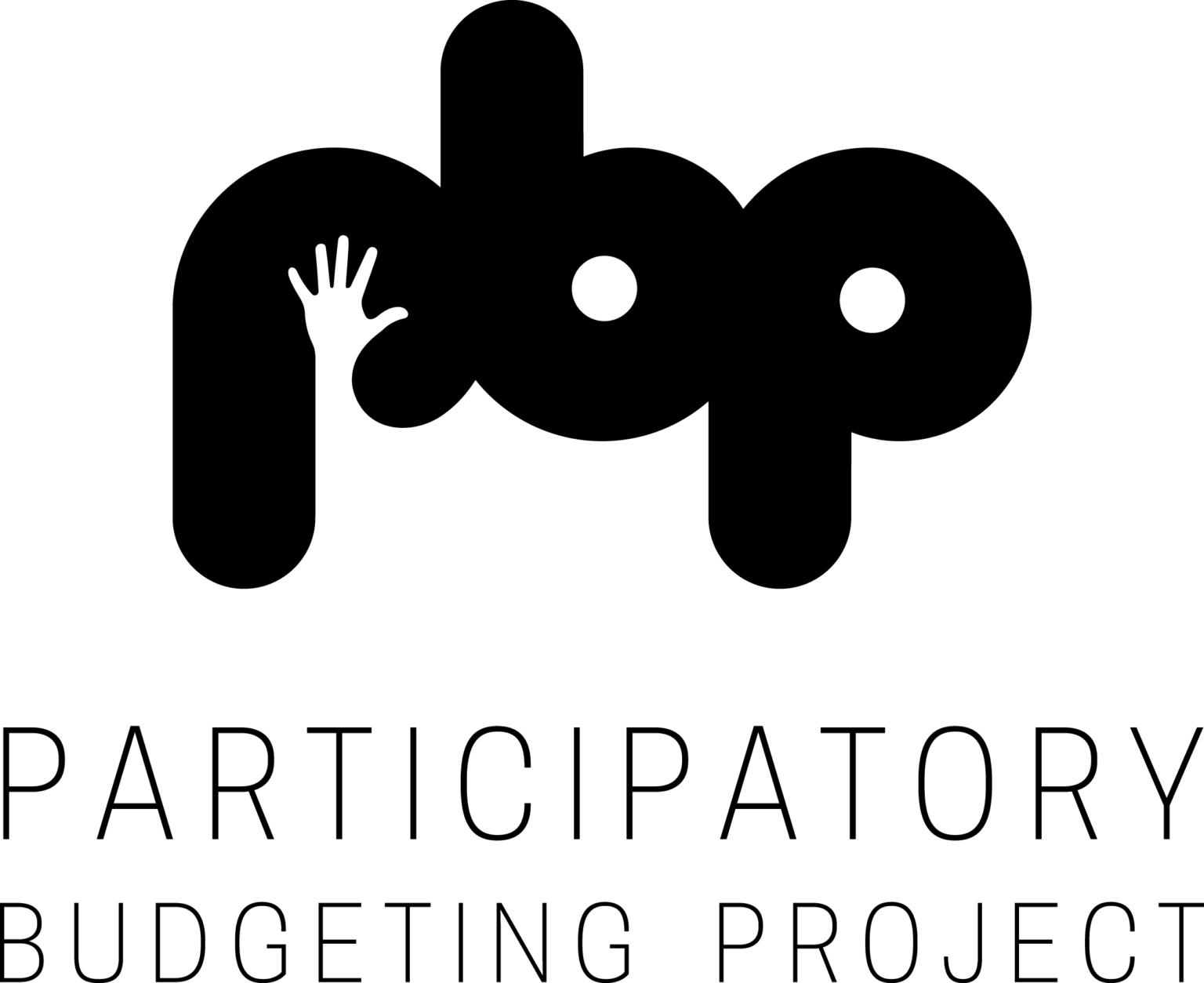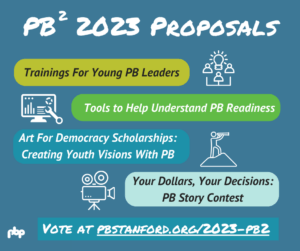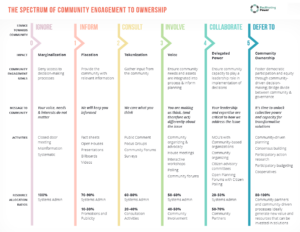Participatory budgeting (PB) puts decision-making power into the hands of community members, and all decision-makers need access to good data. PB participants increasingly use data about their cities and neighborhoods to research needs, develop projects, and make informed, equitable spending decisions.
Maps, for example.
Through PB, volunteers, often called budget delegates, meet in small committees to prioritize the ideas generated by the community and develop project proposals for a community-wide vote. But the whole delegate process begins by looking at maps. In Long Beach, California, for example, budget delegates examined maps of several community indicators.
These maps, developed by PBP’s Research Associate Clara Bois, were not only vibrant and beautiful — they were useful. Members of the Parks and Rec Committee could literally see which areas have the highest concentration of youth, low-income residents, or non-English speakers. Using supplemental maps from ParkScore, they could see (again, literally) which parts of the district have the worst access to parks.
All of this information helps participants to prioritize projects that serve district areas with the greatest need.
For Kasia McDermott, a PB Long Beach budget delegate in the Parks Committee, learning about her community via demographic maps shed new light on her priority projects. “In some cases the actual data correlated pretty closely to the anecdotal data collected by our committee, in other cases it was the exact opposite,” said McDermott. “Community maps helped our committee make informed choices about the projects we chose to pursue and which ones were a top priority.”
“PB is such a huge idea to get your head around. How do you make change in a challenged community? Where do you even start? On a personal level, everyone thinks they know a neighborhood, but how many people really step outside their own block or cultural group? The answer is that you begin by looking at the data.”
More Community Data Tools: Tips from Experts
During the last PB conference in September, PBP devoted an entire session to data and research tools with a focus on ways to make mapping and community research tools accessible to communities engaging in PB.
We heard from three stellar speakers whose organizations develop tools to collect, visualize and analyze data. Here are some of the highlights:
- Community and budget data is out there, especially from the federal and state level. The challenge is turning those “cold, hard numbers into more qualitative stories,” explained Doug Hall, Executive Director of the National Priorities Project (NPP). Fortunately, there are tools to help anyone make sense of data, like NPP’s own Local Spending Data tool, where users can learn how federal dollars are spent locally. Also, Census Reporter, a user-friendly, open-source tool for exploring Census data about your city.
- Communities need to be able to generate new data. Jay Donahue from Data Center noted that Census data and other large scale government data collection efforts don’t cut it at the local level. Highly aggregated data is often outdated as soon as it’s made available and sometimes omits information about smaller, high need communities. He argued that communities also need to be able to do their own field research and collect their own data, as PB participants often do. Low-cost tools like vojo.co and Ushahidi can help PB delegates collect feedback as they develop projects.
- Communities need to be able to visualize and share their data without lots of technical expertise. How can PB delegates visualize and share new data they gather as they prioritize project proposals? Taisha Bonilla, from the Advancement Project, presented on one free option: their interactive data and mapping tool called Healthy City. It’s available to community groups in California to map demographic and economic information as well as services for low-income people.
At the end of the session, conference participants broke into groups to generate a preliminary list of free and low-cost tools that are already available to the public, like crowdsourced mapping tools, budget visualizations, municipal data portals, and more.
How to get more involved.
One thing that became clear from the conference discussions is that some of the best data resources are people. You can help us extend our reach by:
Adding resources to the list! Do you know of more resources, not included in this list? Add them! We’d like to turn this list into a resources catalog for PB participants. Contact aseem@participatorybudgeting.org if you can help!
Volunteering your skills! If you’re a policy/data analyst, student, researcher, planner, designer or cartographer interested in volunteering your skills to support community decision-making, we are always looking for help! Sign up to volunteer here.







